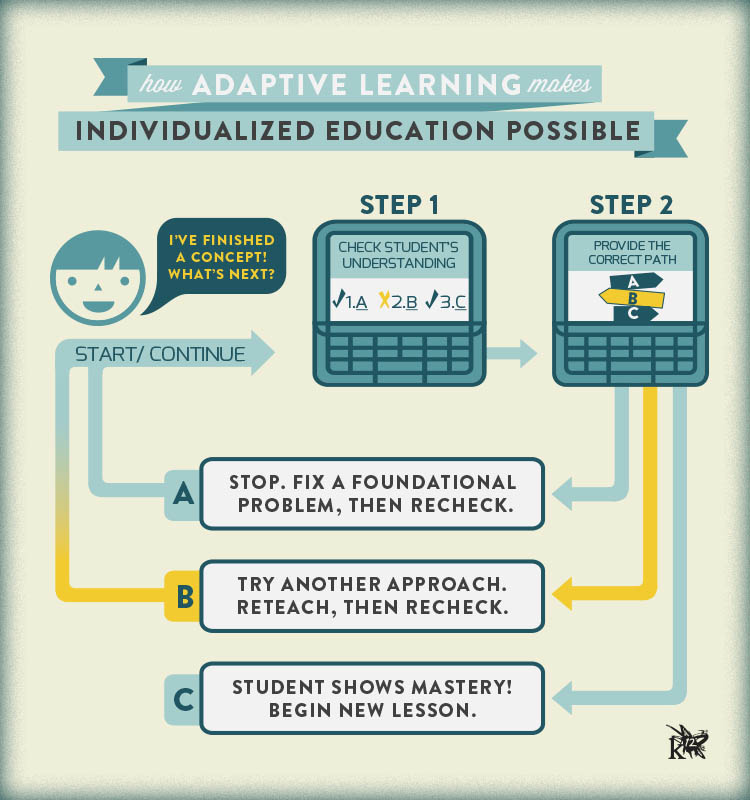Increasingly, a computer has the power to learn about the person using it. In the world of online learning, the goal of the engineer who designs the computer’s code is to fuel an individualized learning experience and to arm teachers and parents with information to help students. The goal is adaptive learning. Learning technology makes it happen. Here are some examples of how it works:
For a Struggling Student
- Based on a student’s answers, a computer responds accordingly. For instance, if a student fails to solve a number of problems or answers questions incorrectly, the computer determines next steps based on the student’s answers. Possibilities can include presenting an alternative problem or simpler problems. If needed, remedial or foundational content may be presented. Or, a teacher’s assistance may be included in the next problem. The computer determines the student’s needs based on his or her performance in the lesson.
For an Advanced Student
- If a student breezes through questions with correct answers, the computer determines next steps based on those answers. Possibilities can include presenting more problems to double check mastery or offering more advanced problems. The answers may suggest the learner can skip the next topic or would be interested in an extension activity such as a short research project.
Why Adaptive Learning Technology Works
As a parent or teacher, you have probably tried to help your students in these scenarios. And, in these instances, incorrect assumptions can create real challenges for learners.
With adaptive learning, the computer collects information about student performance and that data is used to develop a plan. Each student’s needs are different. Good teachers recognize this, and computer-driven adaptive learning programs recognize it as well. The computer continually verifies learning and frequently can help a student progress almost immediately. In addition, the computer program can adjust or adapt to ensure a student receives learning challenges that are just right for the individual- not too hard, not too easy. Educational psychologists call this the student’s zone of proximal development, or ZPD. Through ongoing questioning, an adaptive program keeps the learner in the ZPD, resulting in successful learning.
How Adaptive Learning Technology Helps Parents, Teachers, and Students
The ZPD is a good place to be for learning, but a teacher looking across a large class of students is faced with a dilemma. Students are often in very different ZPD’s, and it can be difficult to help them all. Effective adaptive learning programs make large amounts of performance data available for the teacher to review and act on. In a well-designed program, the computer supports the teacher by creating the visibility necessary for targeted remediation. Often the teacher can create small groups and work with students that share similar learning roadblocks.
Adaptive learning programs will increasingly become the teacher’s best friend. These programs will drive differentiated instruction, provide educators with actionable information, and help teachers ensure students are in the ZPD. Students can progress more independently and are rewarded with success instead of feeling the work is “too hard” or “too easy.”
The possibilities are real and significant as adaptive learning models continue to evolve and become more sophisticated. iNACOL (the International Association for K-12 Online Learning) continues to track and describe this progress. At K12 we are excited about using our top quality content in adaptive learning programs. Currently our MARK12 reading remediation program uses adaptive learning to support struggling elementary school students, and we are planning new adaptive programs to prepare students for success in both middle school and high school. We recognize the need to support a student’s individual learning path and the promise of combining high quality materials with adaptive learning to advance each unique learner.
Here’s what it looks like:






































